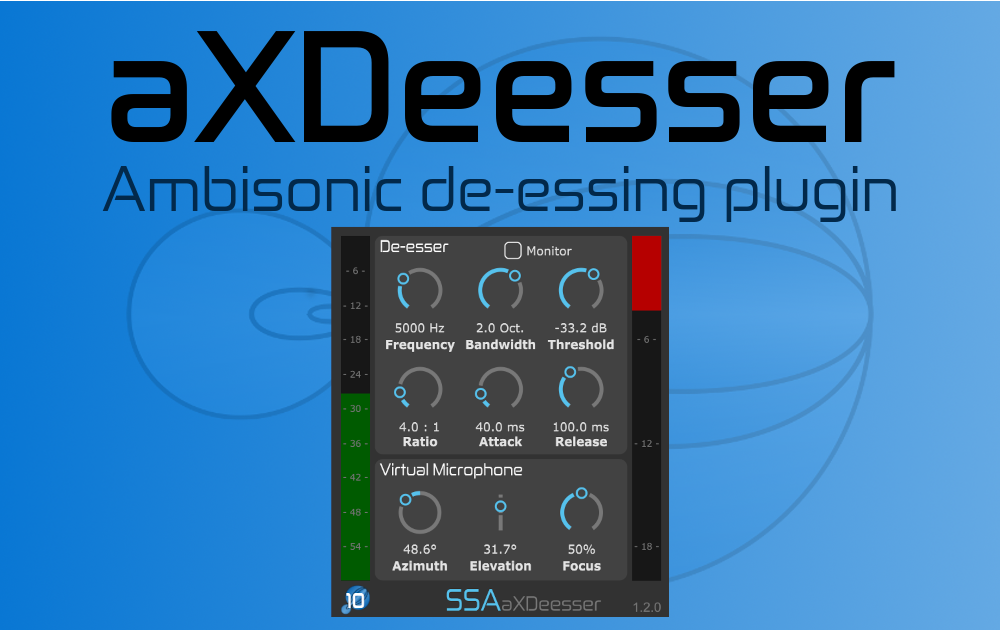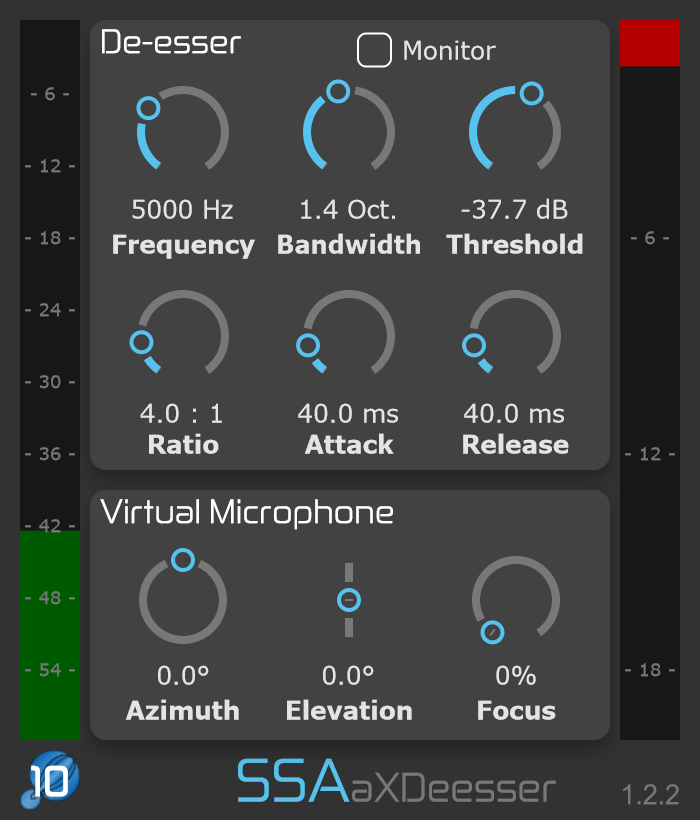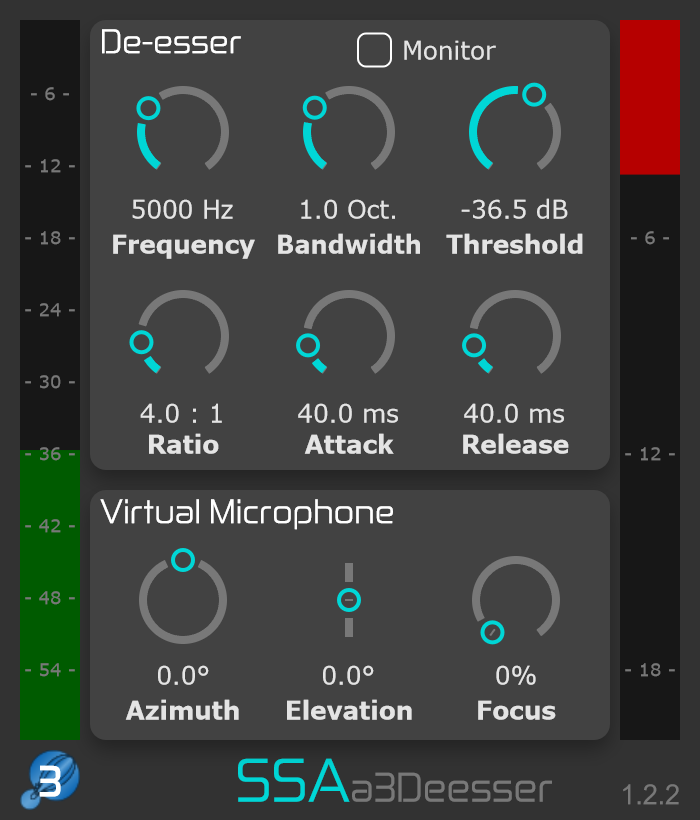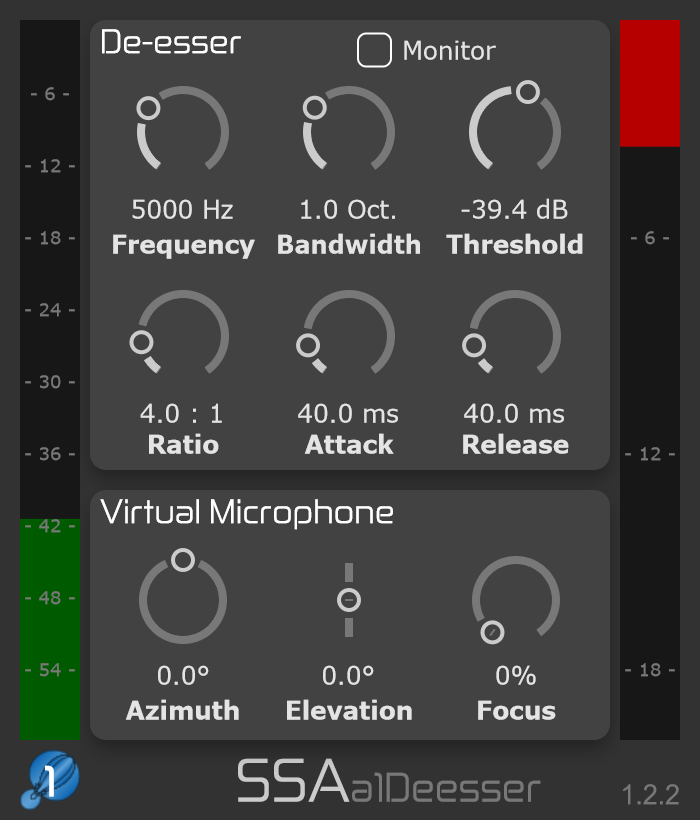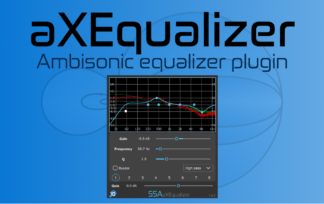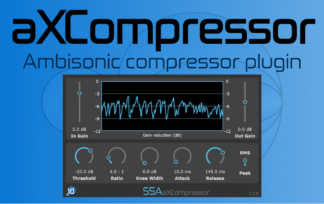Description
The aXDeesser is a de-essing plugin that can be used on any AmbiX-format (SN3D/ACN) Ambisonic signal. It allows the signal within a particular band to be compressed. This is normally used to remove sibilance from voices recorded or encoded Ambisoncally, though it can be used creatively on sub-mixes containing multiple sound sources.
The aXDeeser is ideal for use on signals recorded with an Ambisonic microphone. The a1Deesser will allow you to de-ess recordings from microphones such as the TetraMic or Sennheiser AMBEO VR mic. The a3Deesser will allow you to de-ess recordings from the OctoMic or Zylia microphone.
The aXDeesser also allows you to select the direction you want to focus on for activating the de-essing effect, so the compression will only be activated when signals picked up by the virtual mic are above the threshold. Sounds from other directions will not contribute to activation of the de-esser. Note, however, that the de-esser will be applied to all sources in the sound field when it is activated. Features and Parameters The aXDeesser has the following parameters:
- Frequency: The centre frequency of the band to be compressed. This should be centred on the portion of the spectrum in which you want to reduce sibilance.
- Bandwidth: The bandwidth, in octaves, of the band you wish to compress.
- Threshold: Set the level threshold at which the compressor begins to act on the defined sibilance band.
- Ratio: Adjust how much compression is applied to signal above the threshold. A ratio of 1 means no compression while higher ratios lead to stronger compression of the sibilance band.
- Attack: The time in milliseconds (ms) for the compressor to become fully effect once a signal goes above the threshold.
- Release: The time in milliseconds (ms) for the compressor to fully switch off once a signal goes below the threshold.
- Monitor Sibilance Band: You can solo the sibilance band in order to asses the effect of the compression.
The virtual microphone, used to generate the signal that drives the de-esser, has the following parameters:
-
- Azimuth: The azimuthal direction you want the virtual microphone to point. Positive angles are in an anti-clockwise direction, meaning +90 degrees is to the left and -90 degrees is to the right.
- Elevation: The elevation angle of the virtual microphone to be pointer. Zero is on the horizontal, +90 degrees is directly up and -90 degrees is directly down.
- Focus: The focus controls the directivity of the virtual microphone that is used to drive the de-esser. A focus of 0% leads omnidirectional directivity, meaning all audio in the sound field is used to drive the de-esser. Increasing the focus increases the rejection of sounds away from the direction the virtual microphone is pointed. The maximum narrowness of the 100% focus is dependent on the order at which the plugin is operating (shown in the bottom left corner). First-order allows up to cardioid directivity. Higher orders allow for narrower directivity and better rejection of sound sources away from the virtual microphone direction.
- Note that the maximum directivity depends on the order of the incoming signal, not the maximum order of the plugin. A first-order Ambisonic input signal will have a maximum of first-order directivity/focus, even if the plugin is capable of seventh order.
Input: AmbiX (SN3D/ACN) format Ambisonics. Output: AmbiX (SN3D/ACN) format Ambisonics. Plugin Formats:
- AAX (64 bit) for Windows – Requires Pro Tools Ultimate or Studio.
- AAX (Apple Silicon/Intel) for Mac – Requires Pro Tools Ultimate or Studio.
- VST3 (64 bit) for Windows.
- VST3 (Apple Silicon/Intel) for OSX.
Available Versions: The aXRotate is available with 3 levels of spatial resolution, with different maximum Ambisonic orders:
- a1Deesser- de-ess first-order Ambisonic signals.
- a3Deesser- de-ess up-to third-order Ambisonic signals.
- a7Deesser- de-ess up-to seventh-order Ambisonic signals.
Seventh order Ambisonics requires a massive 64 channels for each track! Not all DAWs can handle this so please download the demo version to test if your DAW and workflow is compatible with this product – you might only need the first-order or third-order version!
VST is a registered trademark of Steinberg Media Technologies GmbH.

